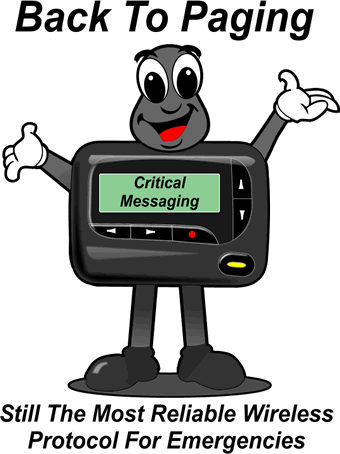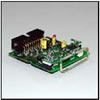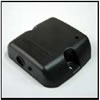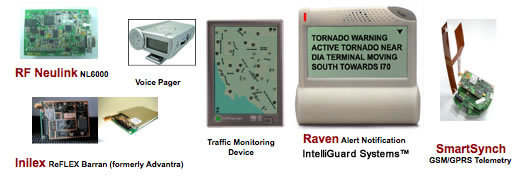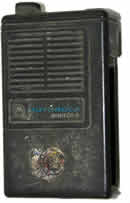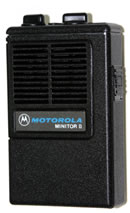BloostonLaw Telecom Update Published by the Law Offices of Blooston, Mordkofsky, Dickens, Duffy & Prendergast, LLP [Portions reproduced here with the firm's permission.] www.bloostonlaw.com |
| Vol. 13, No. 39 | October 6, 2010 |
 FCC To Probe Verizon’s “Mystery Fees” The FCC has confirmed that it is investigating so-called “mystery fees” that appeared on Verizon Wireless bills costing over 15 million Americans tens of millions of dollars. Verizon itself has put the count of overcharges at more than 50 million dollars dating back two years. In October and November, Verizon said, it is notifying about 15 million customers, through regular bill messages, that it is applying credits to their accounts due to mistaken past data charges. It will mail former customers refund checks. In most cases, these credits are in the $2 to $6 range; some will receive larger credits or refunds. Verizon said it discovered that over the past several years approximately 15 million customers who did not have data plans were billed for data sessions on their phones that they did not initiate. These customers would normally have been billed at the standard rate of $1.99 per megabyte for any data they chose to access from their phones. The majority of the data sessions involved minor data exchanges caused by software built into their phones; others included accessing certain web links, which should not have incurred charges. Verizon said it has addressed these issues to avoid unintended data charges in the future. Nevertheless, the FCC’s Enforcement Bureau said it is looking into the matter to ensure that such things don’t happen again. FCC Commissioner Mignon Clyburn issued a statement, noting that the billing errors were identified more than two years ago. She said that “the 15 million overcharged consumers, identified by Verizon Wireless, deserve more than refunds.” BloostonLaw contacts: Hal Mordkofsky, John Prendergast, Richard Rubino, Cary Mitchell, and Bob Jackson. |
 INSIDE THIS ISSUE - FCC quietly changes SAR position on cell phones, stirs consumer controversy.
- Iowa Board rejects rural co-op’s access rate hike.
- CTIA proposes compromise for transitioning to market area licensing.
- Net neutrality legislation appears to be dead for this year.
- Falls Church, Virginia, parents oppose school cell tower.
|
FCC Quietly Changes SAR Position On Cell phones, Stirs Consumer Controversy The FCC has revised its Consumer Fact Sheet regarding guidance to cell phone users worried about the health effects of wireless devices. The updated language omits a previous suggestion that users buy phones with lower specific absorption rates (SAR), a measure of the rate of radio-frequency (RF) energy absorbed by the human body. The FCC now says that any phone approved by the FCC has passed its absorption tests and is safe. The Washington Post noted that this “guidance change” was made without any fanfare or formal announcement, and that such “lack of transparency” was criticized by consumer groups. Writing on the consumer group Public Knowledge’s blog, retired FCC staffer Michael Marcus (who helped write the rules for Wi-Fi and Bluetooth and was a member of the Spectrum Policy Task Force), said that while there is no evidence there are any ill health effects from cell phone emissions, the FCC made two “secret” changes to its consumer Web site with respect to SAR. The changes, Marcus said, were basically deleting a suggestion that consumers consider “buy[ing] a wireless device with lower SAR” and adding “even though all cellphones must meet established federal standards for exposure to RF energy, some consumers are skeptical of the science and/or the analysis that underlies the FCC’s RF exposure guidelines.” The second change, he said, was the creation of a new webpage entitled “SAR For Cell Phones: What It Means For You” that “tries to rationalize, poorly it turns out, this new policy.” Marcus believes the reason for this sudden change may be related to the CTIA law suit against San Francisco’s recent ordinance requiring point of sale disclosure of SAR data. “At least this is the suspicion of Environmental Working Group (EWG),” Marcus wrote EWG, which has filed a FOIA request, said in a press release that it is seeking information “to shed light on whether the trade association for the wireless industry is working with the FCC to challenge San Francisco’s Cell Phone Right-To-Know Ordinance, the first law passed by a U.S. jurisdiction to require retailers to display radiation values for individual wireless devices at the point of sale … As a consumer watchdog group, EWG suspects that CTIA wants the FCC to intervene in its lawsuit with San Francisco. And, in fact, the FCC has a history of siding with industry in legal disputes concerning cell phones.” Marcus said: “Maybe there are good reasons to change the 10 year old FCC posture on the usefulness of SAR information to consumers, but a secretive change like the one that was just made raises questions of collusions with industry and does not help make the change credible. Nor does it make a positive statement of the level of transparency at FCC.” The FCC’s “Consumer Fact Sheet.” Excerpts from the FCC’s “Consumer Fact Sheet” are printed below: “All wireless devices sold in the US go through a formal FCC approval process to ensure that they do not exceed the maximum allowable SAR level when operating at the device’s highest possible power level. If the FCC learns that a device does not conform with the test report upon which FCC approval is based – in essence, if the device in stores is not the device the FCC approved – the FCC can withdraw its approval and pursue enforcement action against the appropriate party. “Recently, some health and safety interest groups have interpreted certain reports to suggest that wireless device use may be linked to cancer and other illnesses, posing potentially greater risks for children than adults. While these assertions have gained increased public attention, currently no scientific evidence establishes a causal link between wireless device use and cancer or other illnesses. Those evaluating the potential risks of using wireless devices agree that more and longer-term studies should explore whether there is a better basis for RF safety standards than is currently used. The FCC closely monitors all of these study results. However, at this time, there is no basis on which to establish a different safety threshold than our current requirements. “Even though no scientific evidence currently establishes a definite link between wireless device use and cancer or other illnesses, and even though all cell phones must meet established federal standards for exposure to RF energy, some consumers are skeptical of the science and/or the analysis that underlies the FCC’s RF exposure guidelines. Accordingly, some parties recommend taking measures to further reduce exposure to RF energy. The FCC does not endorse the need for these practices, but provides information on some simple steps that you can take to reduce your exposure to RF energy from cell phones. For example, wireless devices only emit RF energy when you are using them and, the closer the device is to you, the more energy you will absorb. Some measures to reduce your RF exposure include: - Use a speakerphone, earpiece or headset to reduce proximity to the head (and thus exposure). While wired earpieces may conduct some energy to the head and wireless earpieces also emit a small amount of RF energy, both wired and wireless earpieces remove the greatest source of RF energy (the cell phone) from proximity to the head and thus can greatly reduce total exposure to the head.
- Increase the distance between wireless devices and your body.
- Consider texting rather than talking—but don’t text while you are driving.
“Some parties recommend that you consider the reported SAR value of wireless devices. However, comparing the SAR of different devices may be misleading. First, the actual SAR varies considerably depending upon the conditions of use. The SAR value used for FCC approval does not account for the multitude of measurements taken during the testing. Moreover, cell phones constantly vary their power to operate at the minimum power necessary for communications; operation at maximum power occurs infrequently. Second, the reported highest SAR values of wireless devices do not necessarily indicate that a user is exposed to more or less RF energy from one cell phone than from another during normal use (see “SAR For Cell phones – What It Means For You”). Third, the variation in SAR from one mobile device to the next is relatively small compared to the reduction that can be achieved by the measures described above. Consumers should remember that all wireless devices are certified to meet the FCC maximum SAR standards, which incorporate a considerable safety margin. (Information about the maximum SAR value for each phone is publicly available on the FCC web site at www.fcc.gov/cgb/sar.) “Some studies have shown that wireless devices might interfere with implanted cardiac pacemakers if used within eight inches of the pacemaker. Pacemaker users may want to avoid placing or using a wireless device this close to their pacemaker.” BloostonLaw contacts: Hal Mordkofsky, John Prendergast, Richard Rubino, Cary Mitchell, and Bob Jackson. Iowa Board Rejects Rural Co-op’s Access Rate Hike The Iowa Utilities Board (IUB) recently made a decision that is contrary to 100 years of utility laws and may potentially have lasting negative consequences for small telephone companies. The IUB rejected a proposal by Kalona Cooperative Telephone Company to increase its intrastate switched access and special access rates. The rate increases would have allowed Kalona to recover costs, but the IUB held that Kalona was not guaranteed a rate of return for intrastate switched access rates. Kalona proposed to change its telephone access tariff last year, claiming that it was not able to recover costs plus a rate of return under the Iowa Telecommunications Associations Access Tariff No. 1. Verizon and AT&T both resisted Kalona’s proposed changes, arguing that the rates were unjust, anticompetitive and discriminatory. However, the IUB allowed the tariff to become effective while the IUB investigated the issue further, subject to refund. During the dispute, Verizon and AT&T argued that other rural local exchange carriers (RLECs) offer services at lower rates and still recover costs, which illustrated that “Kalona should be able to provide similar services at similar rates [as other RLECs] and, therefore, Kalona’s proposed rates are too high.” This point shifted the burden of proof to Kalona to prove that the proposed rate increase was reasonable and justified. Kalona provided an embedded cost study of intrastate access costs to support its proposed rate increases, but the IUB rejected this model and recommended a forward-looking cost study despite the fact that IUB rules do not mandate a specific cost study methodology. Furthermore, the IUB did not provide a cost study model to use in place of the rejected embedded cost model beyond hinting at an alternative. According to the Rural Iowa Independent Telephone Association (RIITA), “This rejects over 100 years of utility regulation, and provides a convenient rationale for any result reached by the IUB…By rejecting models based on the results, the entire telecommunications industry is now formally dependent upon the whim of the IUB.” Kalona’s cost study and a rate of return of 11.25% used in the study were consistent with FCC models and rates. AT&T was primarily concerned about Kalona’s cost allocations, arguing that Kalona misallocated central office equipment with an out-of-date “dial equipment minute” factor. AT&T also argued that Kalona did not properly spread costs evenly among regulated and deregulated services, and that Kalona is not entitled to an 11.25% rate of return because it is a cooperative. Verizon was concerned that “if Kalona is successful in its attempt to raise its intrastate switched access rates, other LECs may follow or may simply adopt the higher rates of Kalona's tariff.” Verizon further questioned whether Kalona’s proposed rate increase is in the public interest because it would end up rewarding the companies with the highest costs. A third participant, Consumer Advocate, urged the IUB to make Kalona refund the revenues that were collected from the rate increase. The IUB concluded that Kalona’s embedded cost study did not prove that the rates were just and reasonable, and this type of study is more appropriate for a regulated monopoly than a competitive marketplace. Additionally, the IUB found Kalona’s embedded costs in the study were not an accurate and prudent representation of reasonable costs of providing service. Ultimately, Kalona was ordered to issue refunds for revenues earned in excess of the ITA Tariff rates since March 2009. BloostonLaw contacts: Ben Dickens, Gerry Duffy, and Mary Sisak CTIA Proposes Compromise For Transitioning Cellular To Market Area Licensing In RM-11510, the FCC has under consideration an October 2008 Petition for Rulemaking filed by CTIA – The Wireless Association proposing that Part 22 800 MHz Band cellular service be transitioned from a site-based service to a market area-based service. CTIA recently filed an ex parte presentation with the FCC in the proceeding setting forth a compromise proposal for transitioning to the market-based licensing system, a proposal which CTIA describes as the result of deliberations “with various stakeholders, including large and small carriers.” The new CTIA proposal draws a distinction between fully-served and under-served markets, “extending the benefits of market-based licensing to the former, while preserving the Commission’s unserved area rules in the latter.” According to CTIA, “the revised plan anticipates that the Commission’s unserved area rules could continue unchanged, indefinitely, in sparsely populated/underserved markets.” The Gulf of Mexico Service Area is specifically excluded from the new CTIA plan. In support of the plan, CTIA notes that 98% of Americans live in areas with 3G wireless service; that 91% of all Cellular Market Area (CMA)/Frequency Blocks (Blocks) are more than 90% served; and that in CMA/Blocks where there are contiguous unserved areas larger than 50 square miles and where the CMA/Block is less than 90% served, the current Phase II Unserved Area application process will be retained. A two step plan is proposed. Step One. Under Step One, cellular systems will be immediately converted to a market-based service. Each active cellular license will be deemed to be a market-based license, with the geographic boundaries of each license being determined by the licensee’s currently-authorized Cellular Geographic Service Area (CGSA), including areas within the CGSA that may be located in other CMAs. Consistent with other services licensed on a market-area basis, cellular licensees will be entitled to operate anywhere within the boundaries of their geographic license area subject to a 40 dBuV/m median field strength at the license area boundary unless adjacent licensees have agreed to a higher field strength; and cellular licensees will not be required to obtain prior FCC approval for CGSA changes except where proposing to expand their geographic license area into unserved areas (subject to the provisions of Step Two, below). No later than one year after the effective date of the new rules, each cellular licensee will be required to file an updated System Information Update (SIU) map (which shows the system’s CGSA boundaries) — in a GIS format to be specified by the FCC — depicting the licensee’s authorized CGSA as of the filing date. Each SIU map must be accompanied by a copy of the licensee’s most recent, FCC-approved CGSA map. The CGSA boundaries in each map must be substantially identical, and must be calculated using the methodology specified in Rule Section 22.911 (i.e., the system’s outer composite formula-method 32 dBu contours). Updated SIU maps may be filed at any time. Also within one year of the effective date of the new rules, licensees may file modification notifications and applications, with corroborating documentation, to make corrections to the system’s licensing records in the Universal Licensing System. Where the FCC’s unserved area license rules remain in place, licensees may continue to file modifications after the expiration of this one-year period. Licensees will be required to work together to resolve any disputes regarding CGSA boundaries and, if they are unable to do so, either party may, at its own expense, refer such matter to arbitration for resolution. Step Two. Under Step Two, the unserved area licensing rules will sunset on a CMA/Block-by-CMA/Block basis as of the date on which, if ever, a CMA/Block is deemed fully served (the “Sunset Date”). A CMA/Block will be deemed fully served on the date that SIU map(s) are filed with the FCC demonstrating that (excluding government lands, but not tribal areas): 1) there are no contiguous unserved areas 50 square miles in size or larger remaining within the CMA/Block; or 2) more than 90% of the total land area within the CMA/Block is served. CMA /Blocks that do not meet these criteria will remain subject to the FCC’s existing unserved area, site-based licensing rules until such time as they do. After the Sunset Date in a CMA/Block, residual unserved areas will be distributed to incumbent licensees as follows: 1) In CMA/Blocks with only one licensee, to the licensee. 2) In CMA/Blocks with multiple licensees, to the licensees on a proportional basis, based on the geographic size of each licensee’s CGSA, with the goal of distributing unserved areas to immediately adjacent licensees in the CMA/Block. In the event that incumbent licensees in a CMA/Block cannot agree as to how remaining unserved areas are to be distributed following the Sunset Date, the licensees may, at their own expense, submit the matter to arbitration for resolution. After the Sunset Date in a CMA/Block, licensees may, but are not required to, request that the FCC issue a new market-based license certificate for their license area based on their most recent SIU map, including any residual areas distributed to them pursuant to the provisions described above. This proposal likely will be unpalatable to companies such as Atlantic Tele-Network, Inc., whose subsidiaries have been establishing stand-alone cellular systems in various cellular unserved areas around the country and which would be precluded from doing so under the CTIA consensus plan. Please contact us if you would like more information on the CTIA consensus plan or if you would like to file comments on the plan. BloostonLaw Contacts: Hal Mordkofsky, John Prendergast and Bob Jackson NET NEUTRALITY LEGISLATION APPEARS TO BE DEAD FOR THIS YEAR: House Energy and Commerce Committee Chairman Henry A. Waxman (D-Calif.) reluctantly acknowledged that draft net neutrality legislation he has been working on with Telecommunications Subcommittee Chairman Rick Boucher (D-Va.) for the past several weeks was not going to receive the required bipartisan support to move forward this Congress. In a statement, he said he and Boucher have sought to reach bipartisan agreement on legislation that would protect and promote an open Internet. “Our efforts were supported by groups that have long been at odds on this issue: phone and cable companies, technology companies, and consumer and open-internet groups. Our proposal was designed to be an interim measure to protect net neutrality while Congress considers a permanent solution. It contained four key consumer protections that would: - Restore the FCC’s authority to prevent blocking of Internet content, applications, and services, which was struck down by the court in the Comcast decision;
- Prevent phone and cable companies from unjustly or unreasonably discriminating against any lawful Internet traffic;
- Prohibit wireless broadband providers from blocking websites, as well as applications that compete with voice or video conferencing, while preserving the FCC’s authority to adopt additional safeguards under its existing authorities; and
- Direct the FCC to issue transparency regulations so consumers know the price, performance, and network management practices of their broadband providers.”
Under the Waxman-Boucher proposal, the FCC could begin enforcing these open Internet rules immediately — with maximum fines increased from $75,000 to $2,000,000 for violations. And the bill would provide the phone and cable companies with protection from the threat of reclassification for two years. This legislative initiative was predicated on going forward only with full bipartisan support in the Committee. But Ranking Member Joe Barton (R-Texas) said Republican support would not be forthcoming at this time. BloostonLaw contacts: Ben Dickens, Gerry Duffy, and Mary Sisak. FALLS CHURCH, VIRGINIA, PARENTS OPPOSE SCHOOL CELL TOWER: A group of parents at the Longfellow Middle School in Falls Church, Virginia, is vigorously opposing the construction of a cell tower at their school, according to the Washington Post. The tower would be one of many placed at Northern Virginia public schools by Milestone Communications, which has been operating in the area since 2004. The company typically gives the school $25,000 upfront and then $30,000 per year per pole, according to the Post. Milestone states that the towers present no health risks, and that the emissions are well within the limits prescribed by the FCC and the World Health Organization (WHO). But the Longfellow PTA is not buying that argument. Dating back to 1699, Falls Church is a tiny independent city in Fairfax County. It has a population of about 11,000 on 2.2 square miles. And the Longfellow PTA boasts an electrical engineer, a telecommunications attorney, an oncologist, and a gentleman who “just spoke with one of the world’s foremost radiation experts in Salzburg, Austria,” the Post reported. Thus, representatives of Milestone had their hands full when trying to present their case at a recent meeting, especially with respect to the long-term effects of tower emissions. Suffice it to say that Milestone still has a lot of work to do. FCC GRANTS ETC FORBEARANCE FROM LIFELINE, BUT NOT FROM LINK-UP: The FCC has granted in part and denied in part a petition for forbearance filed by Conexions, LLC, a wireless reseller, which requested that the FCC forbear from the requirement that carriers designated as eligible telecommunications carriers (ETCs) for purposes of federal universal service support provide services, at least in part, over their own facilities. The Commission granted Conexions forbearance with respect to the Lifeline program but denied Conexions’ request to extend forbearance with respect to Link Up. As a result, Conexions may seek ETC designation to offer discounted service to qualified low-income consumers through the universal service Lifeline program. Conexions will be subject to the same conditions that the Commission has imposed on other wireless resellers in granting similar requests. If Conexions is granted ETC designation for the purpose of providing Lifeline service, these conditions will help ensure that its low-income consumers have access to 911 and enhanced 911 services and will help protect the universal service fund against waste, fraud, and abuse. The FCC denied Conexions’ petition for forbearance for the purpose of participating in the Link Up program because the company has not demonstrated that granting its request satisfies the three-prong statutory test for forbearance. The FCC said that Conexions has not shown, taking into account the differences between the Lifeline and Link Up programs, why it needs forbearance from the facilities requirement for Link Up specifically nor why the public interest would be served by such forbearance. General references to the statutory goal of ensuring that low-income consumers have access to telecommunications services do not suffice to replace a particularized argument necessary to justify forbearance from statutory requirements. BloostonLaw contacts: Ben Dickens, Gerry Duffy, and Mary Sisak. REP. SCHIFF INTRODUCES DATA BREACH NOTIFICATION ACT: Rep. Adam Schiff (D-CA) has introduced HR 6326, the Data Breach Notification Act, to improve data security, protect consumers from identity theft, and enhance law enforcement’s capability to combat cyber threats. “The FTC [Federal Trade Commission] estimates that there are 10 million victims of identity theft every year, at a cost of close to $50 billion annually,” Schiff said. “The Data Breach Notification Act would attack the problem of identity theft by making sure consumers have the information they need to protect themselves, while also providing a powerful incentive for companies and agencies to enhance their data security.” Specifically, the legislation would create a requirement for any federal agency or business engaged in interstate commerce to notify individuals whose sensitive personal information is purposefully breached or accidentally disclosed to a third party. Sensitive personal information includes full social security numbers, driver’s license numbers, financial information, and other information that could be used for identity theft. The bill would also require entities to notify law enforcement in the event of any breach involving more than 10,000 records, a database of more than 1,000,000 records, a federal government database, or information about law enforcement or national security agents. This would enable law enforcement to determine whether these breaches are isolated incidents or part of larger cyber-threats from organized crime rings, hostile foreign organizations, or even foreign governments. If the breach involves more than 5,000 people in any state, notice must also be provided to major media outlets in that state, as well as credit reporting agencies. The measure introduced by Schiff is a companion to S.139, legislation introduced in the Senate by Sen. Diane Feinstein (D-CA). BloostonLaw contacts: Ben Dickens, Gerry Duffy, and Mary Sisak. SAN ANTONIO APPEALS FCC’s “SHOT CLOCK” ORDER: The City of San Antonio, Texas, has asked the 5th U.S. Circuit Court of Appeals in New Orleans to review the FCC’s “shot clock” decision regarding state and local authority over wireless facility tower siting applications. In its Order on Reconsideration (released August 4), the FCC affirmed that the timeframes—90 days for collocations and 150 days for other wireless facility applications—are automatically tolled only when the reviewing government notifies the applicant of the incompleteness within the first 30 days after receipt. The FCC’s action came in response to a CTIA petition seeking clarification of rules it contended allowed zoning authorities to impede wireless siting facilities and the provision of wireless services. San Antonio sought reconsideration, and now is appealing to the 5th Circuit. Based on its past comments, San Antonio likely will argue that the FCC’s "shot clocks" and "deemed granted"/"court presumption" proposals would run a wrecking ball through municipal land use and zoning laws and, in the process, endanger public safety and effectively deprive local residents and businesses of basic notice, hearing and appeal rights concerning land use planning in their own communities. San Antonio has created overlay zones design to protect historic districts and structures (including the Alamo), the Edwards Aquifer (the City's primary source of water), and development around rivers (including the River Walk) and airports (including military installations). San Antonio is also on record as claiming that the "shot clock" provision would make it almost impossible for San Antonio to comply with public and aviation safety and historic preservation requirements built into the City's land use and zoning laws, and with public hearing and administrative appeal rights of City residents or businesses that choose to exercise their rights under Texas law to object to a wireless siting application and to pursue administrative appeals of those decisions (particularly in residential zones). The Shot Clock rule was adopted by the FCC to curtail unreasonably long state and local tower approval procedures, which have tended to hurt wireless buildout efforts. Therefore, our wireless clients should watch the San Antonio appeal closely. BloostonLaw contacts: Hal Mordkofsky, John Prendergast, Richard Rubino, and Cary Mitchell.  This newsletter is not intended to provide legal advice. Those interested in more information should contact the firm. |












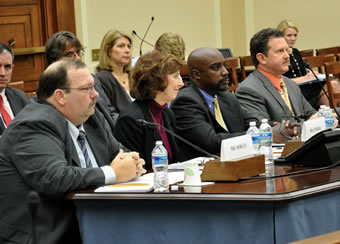




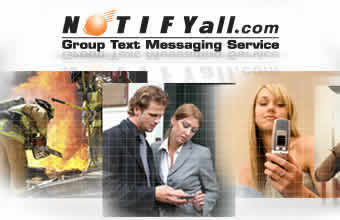
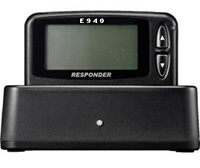

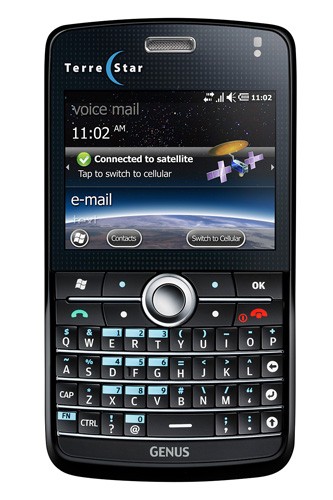 It's been just shy of a year since TerreStar's Windows Mobile-based Genus was
It's been just shy of a year since TerreStar's Windows Mobile-based Genus was 




